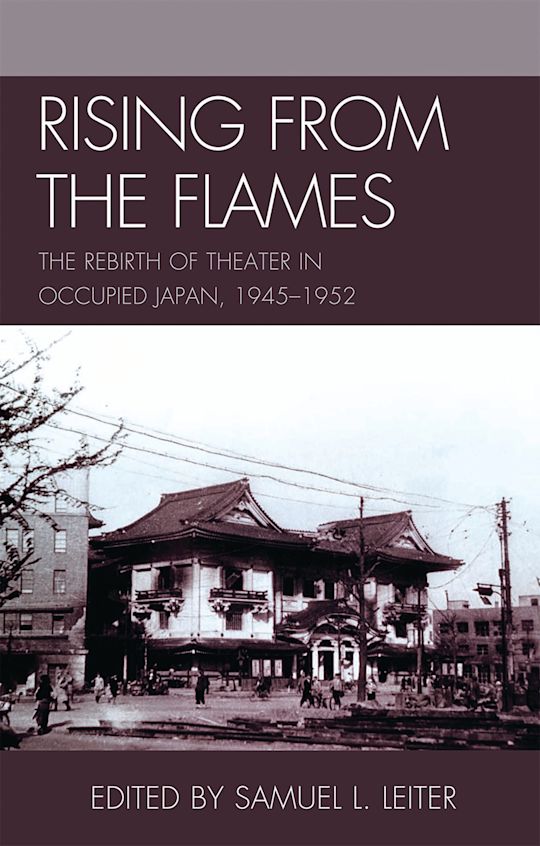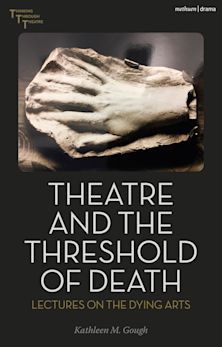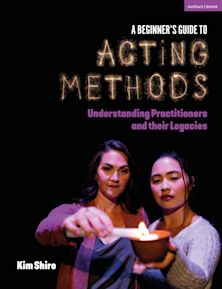Rising from the Flames
The Rebirth of Theater in Occupied Japan, 1945-1952
Rising from the Flames
The Rebirth of Theater in Occupied Japan, 1945-1952
For information on how we process your data, read our Privacy Policy
Description
On August 15, 1945, when the war ended, almost all of Tokyo and Osaka's theaters had been destroyed or heavily damaged by American bombs. The Japanese urban infrastructure was reduced to dust, and so, one might have thought, would be the nation's spirit, especially in the face of nuclear bombing and foreign occupation. Yet, less than two weeks after the atom bombs had been dropped, theater began to show signs of life. Before long, all forms of Japanese theater were back on stage, and from death's ashes arose the flower of art.
Rising from the Flames contains sixteen essays, many accompanied by photographic illustrations, by thirteen specialists. They explore the triumphs and tribulations of Occupation-period (1945–1952) theater, and cover not only such traditional forms as kabuki, no, kyogen, bunraku puppet theater (as well as the traditional marionette theater, the Yuki-za), and the comic narrator's art of rakugo, but also the modern genres of shingeki, musical comedy, and the all-female Takarazuka Revue. Among the numerous topics discussed are censorship, theater reconstruction, politics, internationalization, unionization, the search for a national identity through drama, and the treatment of the emperor on the pre- and postwar stage. The essays in this volume examine how Japanese theater, subject to oppressive thought control by prewar authorities, responded to the new-if temporarily limited-freedom allowed by the American occupiers, attesting to Japan's remarkable resilience in the face of national defeat.
Table of Contents
Part 2 Part 1: Kabuki
Chapter 3 Chapter 1. From Bombs to Booms: When the Occupation Met Kabuki
Chapter 4 Chapter 2. Playing for the Majors and the Minors: Ichikawa Girls' Kabuki on the Postwar Stage
Chapter 5 Chapter 3. The Good Censors: Evading the Threat to Postwar Kabuki
Chapter 6 Chapter 4. The Mitsukoshi Gekij?: The Little Theater That Could
Chapter 7 Chapter 5. Performing the Emperor's New Clothes: The Mikado, The Tale of Genji, and Lèse Majesté on the Japanese Stage
Part 8 Part 2: Other Traditional Theaters
Chapter 9 Chapter 6. No and Kyogen during the Occupation
Chapter 10 Chapter 7. Mitsuwa-kai versus Shochiku: Occupation Reforms and the Unionization of Bunraku
Chapter 11 Chapter 8. Surviving and Succeeding: The Yuki-za Marionette Theater Company
Chapter 12 Chapter 9. Laughter after Wars: Rakugo during the Occupation
Part 13 Part 3: Modern Theater
Chapter 14 Chapter 10. SCAP'S "Problem Child": American Aesthetics, the Shingeki Stage, and the Occupation of Japan
Chapter 15 Chapter 11. From War Responsibility to the Red Purge: Politics, Shingeki, and the Case of Kubo Sakae
Chapter 16 Chapter 12. A Fabulous Fake: Folklore and the Search for National Identity in Kinoshita Junji's Twilight Crane
Chapter 17 Chapter 13. To the Rhythm of Jazz: Enoken's Postwar Musical Comedies
Part 18 Appendix A. A Note on Kabuki Censorship: An Interview withJames R. Brandon
Part 19 Appendix B. A Note on Kansai Kabuki
Part 20 Appendix C. A Note on Takarazuka
Product details
| Published | Sep 24 2009 |
|---|---|
| Format | Ebook (Epub & Mobi) |
| Edition | 1st |
| Extent | 462 |
| ISBN | 9780739141816 |
| Imprint | Lexington Books |
| Series | AsiaWorld |
| Publisher | Bloomsbury Publishing |


































